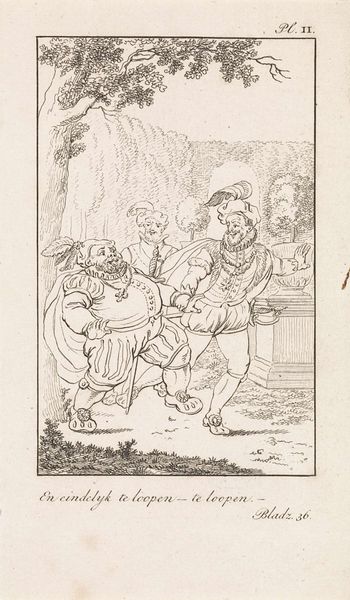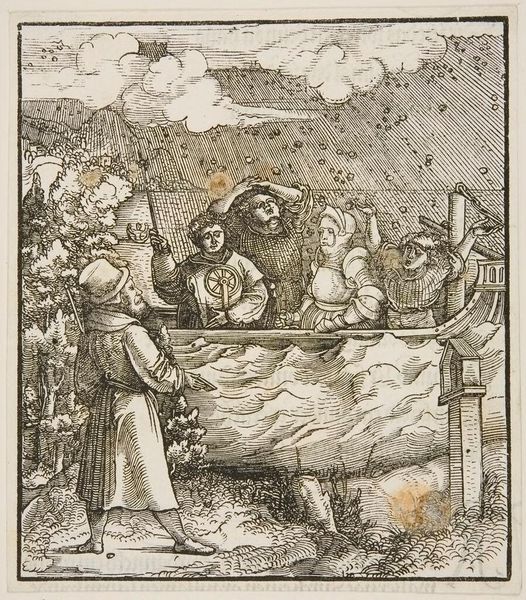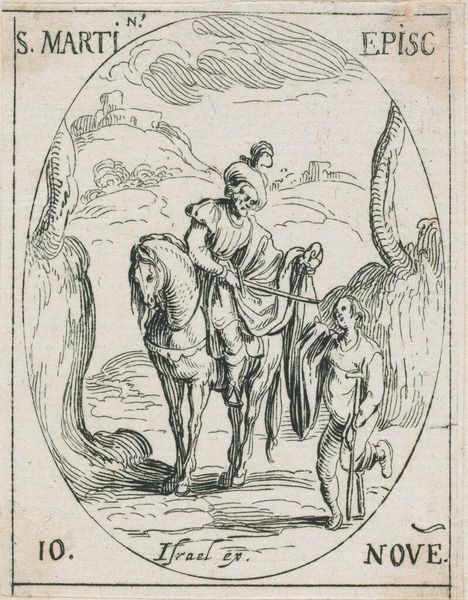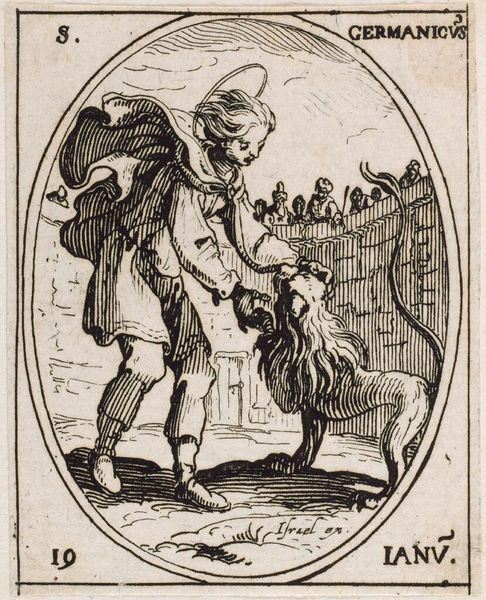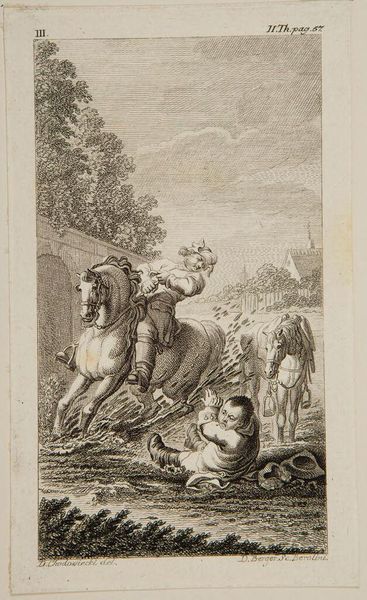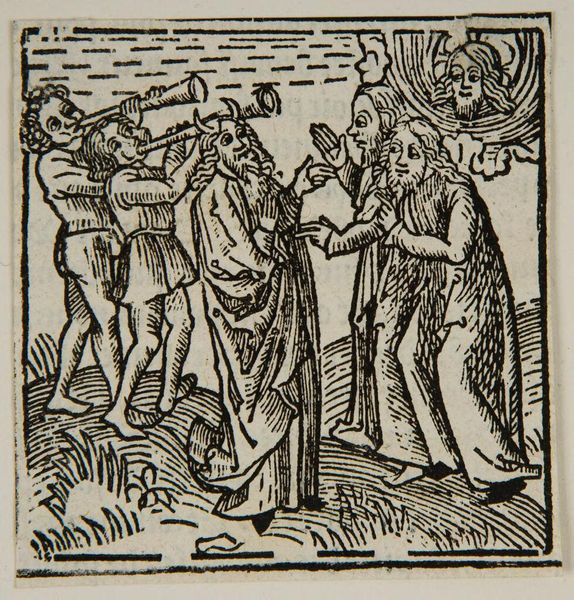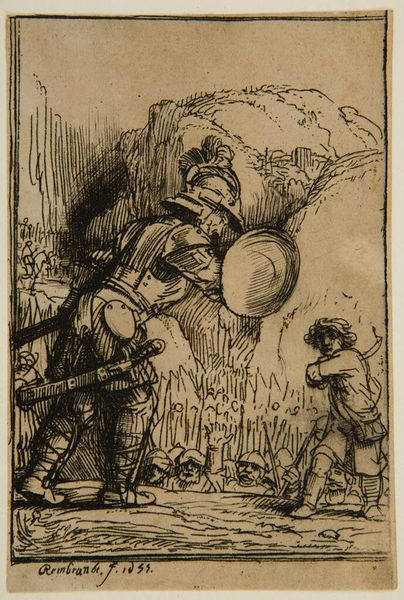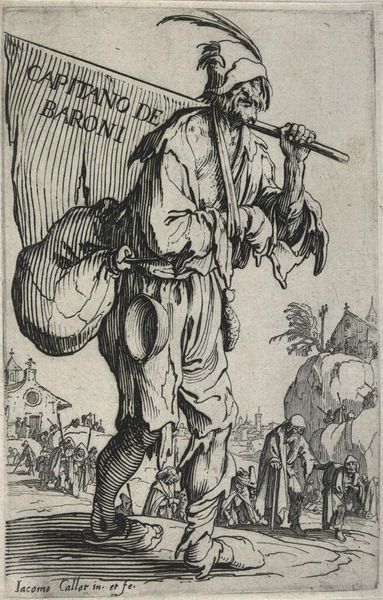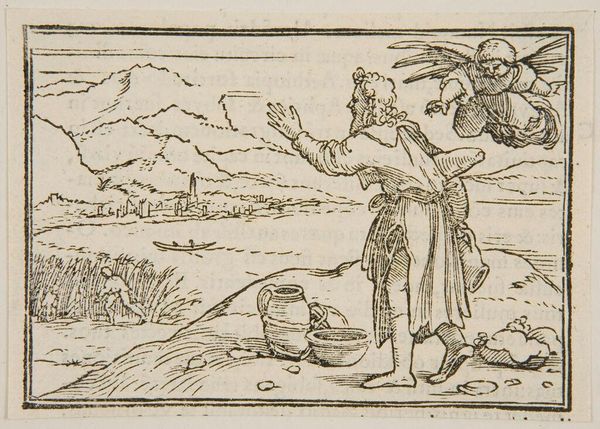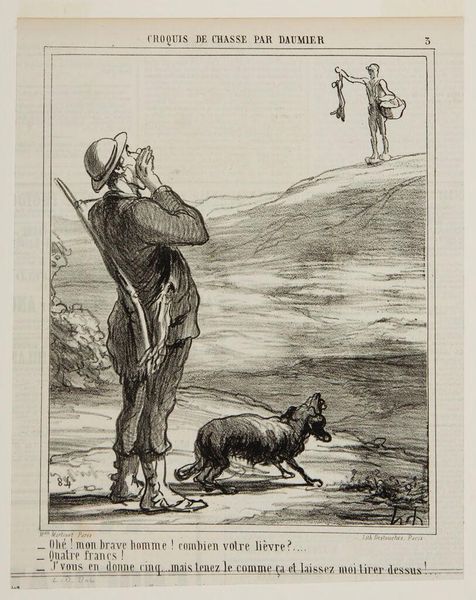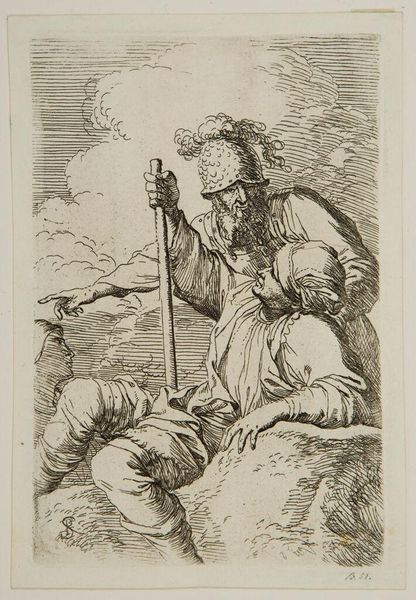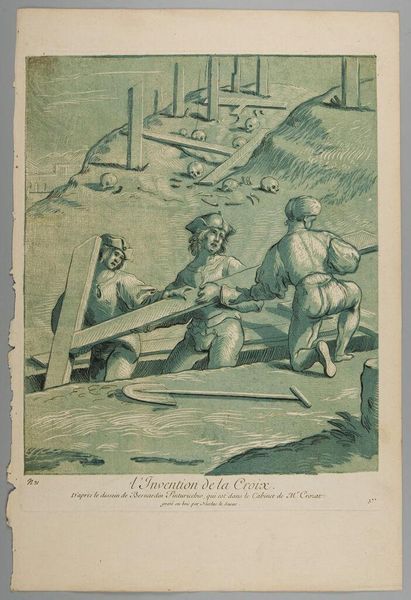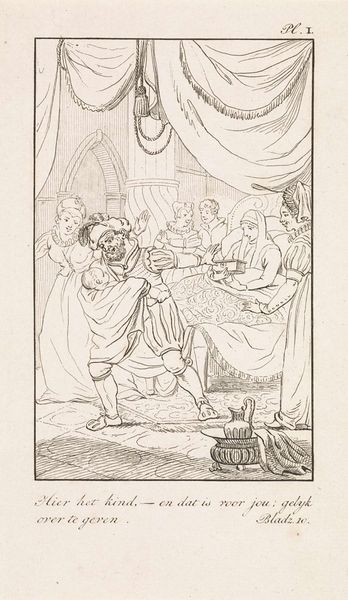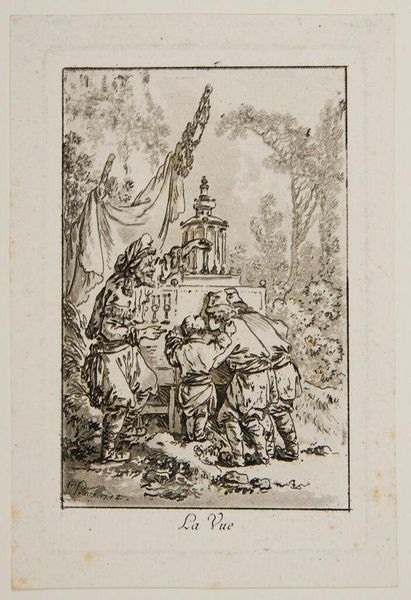
print, engraving
#
narrative-art
# print
#
caricature
#
romanticism
#
genre-painting
#
history-painting
#
engraving
Dimensions: height 198 mm, width 116 mm
Copyright: Rijks Museum: Open Domain
Curator: Ah, I see we've arrived at Daniël (I) Veelwaard's "Dikke krijger op een brug," created sometime between 1802 and 1809. An engraving, quite small and detailed. It’s housed right here at the Rijksmuseum. Editor: My goodness, look at that rotund figure dominating the little bridge! The composition alone is striking – the central figure, almost comically stout, against that retreating landscape. Is this satire, perhaps? Curator: Indeed. Veelwaard was known for these types of caricatures, often with a political or social jab. Romanticism allowed for the freedom to create such satire through print. He turns a rather critical eye towards the historical painting tradition of his era. It's thought to reference a specific moment in Dutch history, though the exact event is debated by scholars. Editor: It does seem to critique the very idea of heroic figures. Observe the stark contrast between this obviously flawed "warrior" and the traditional, idealized depictions of strength and bravery of his contemporaries. The body as a battleground of privilege? Curator: That's a brilliant interpretation. There's also something deeply embedded in class tensions, considering the foppish garb of our bridge-crosser. How the Dutch used dress and physique as commentary. One can almost hear the echoes of revolutionary thought woven into the delicate lines of the engraving. Editor: And it pushes further. What does it mean when power literally obstructs progress, symbolized by the physical occupation of the bridge? What is power for if it cannot offer liberty and passage to the people? Curator: An important question to consider. It's these layers of social commentary intertwined with Veelwaard’s wit that keep this seemingly simple print so compelling centuries later. He clearly dares to criticize the establishment. Editor: Yes, Veelwaard provides us with a darkly comedic, but undeniably important look into Dutch society. The romantic period really made sure political debate wasn't dry and stayed cutting.
Comments
No comments
Be the first to comment and join the conversation on the ultimate creative platform.
